Water Tech Training | The Value of Flood Houses
Article written by Michelle Blevins
With the advent of the internet and online learning, hands-on training seems less necessary when a quick online course can provide people the same information. But is it really the same? I’m sure most of the restorers reading this are thinking nope, it’s not the same! You can read all the manuals you want, but until you physically dry a structure yourself, you don’t fully understand the work required. It’s the difference between being book smart and street smart – and in the restoration industry, we should want to be both.
Flood houses offer great hands-on learning experiences for contractors across the U.S. A quick Google search revealed, at least for me, a surprising number of flood houses across the country – most of which are owned and operated by restoration companies, both franchise and independent. On the same token, there are full-blown academies like Reets that offer training for beginners and experts. With the fast-paced industry we’re in, it can be difficult to imagine sending key team members off for a few days for training – but in the long run, training will pay dividends. According to Caron Business Solutions, hands-on training accelerates learning, provides links between theory and practice (so they know what the S500 says, but do they know how to apply it?), increases engagement, and provides a safe learning environment so mistakes can be made while learning and practicing, rather than in the field.
SERVPRO® has had its own flood house in Tennessee for more than a decade. On average, their flood house experiences a water loss about twice a month. The house meets all IICRC requirements for flood houses so it can be utilized for their Applied Structural Drying (ASD) course. SERVPRO® chooses to also utilize the house for their Water Restoration Technician (WRT) course and other technical training courses.
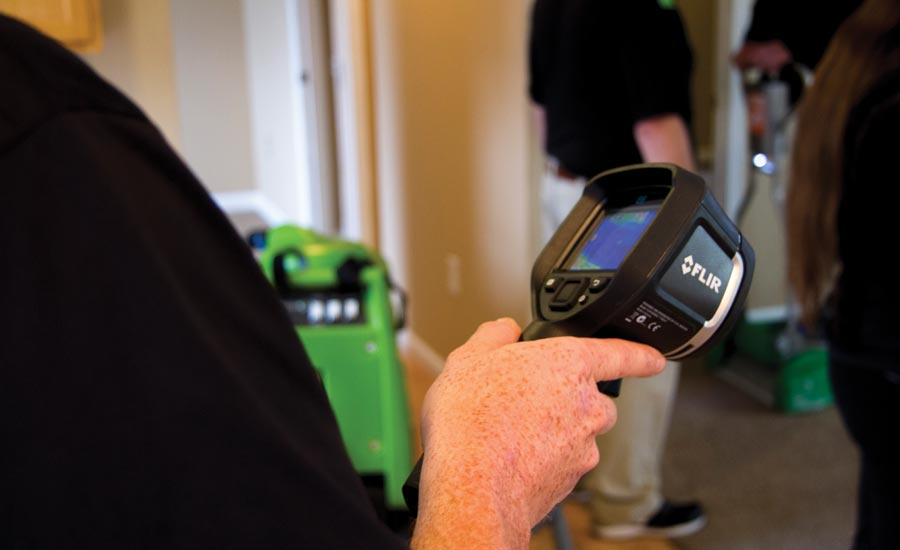
Photos courtesy of SERVPRO
FINDING A BALANCE
Robert Bowles is the production training manager for Servpro Industries, Inc. and an approved IICRC instructor. He’s been with SERVPRO® for 17 years, and is actively involved in running face-to-face training sessions, as well as developing online training resources that complement hands-on training opportunities. While he sees the value in both methods of learning, he is a big proponent of the hands-on training element.
“For most people in the restoration industry, WRT is one of the first technical classes attended. While the IICRC does not have a hands-on requirement for WRT, it’s a lot more valuable for people attending the classroom portion to receive hands-on training,” Bowles said. “Decades of study in adult learning has proven that people engage better when they’re able to ‘do’, and retention is better when there is action around what they are learning.”
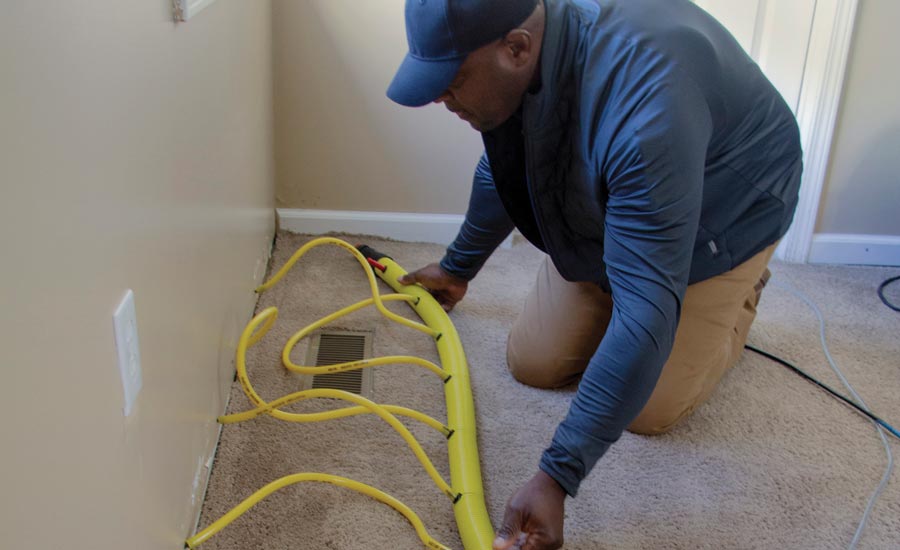
Photos courtesy of SERVPRO
Bowles is aware that more and more companies in all industries are looking for quicker, more cost-effective ways to train their employees. That trend means more people are being trained online and in classrooms, but with decreasing attention spans, hands-on training may be a better route.
“It’s all about quick and easy training, and I think we have to cater to that,” Bowles explained. “Restoration contractors need online, self-paced learning opportunities that fit into their schedule. That needs to be augmented by good on-the-job training in the field. The live training courses, whether classroom or hands-on, simply allow for a more structured and guided learning experience.” The flood house helps create a controlled on-the-job training experience for attendees.
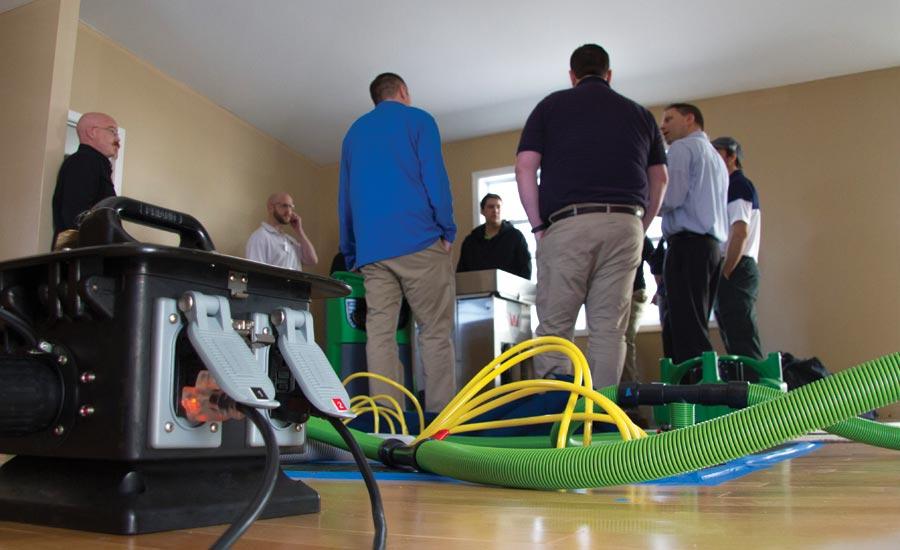
Photos courtesy of SERVPRO
THE FLOOD HOUSE
SERVPRO® actually has two training houses at their corporate headquarters; one for water damage restoration, the second for fire restoration and mold remediation training. The flood house includes 1,200 square feet of living space; three bedrooms, two baths, a partial and full basement.
Fundamentals of Water Technology Training Course
Trainers pump about 1,000 gallons of water into the house, according to IICRC guidelines, and give it enough time to soak in. There are a number of structural materials in the house such as drywall, wood framing, insulation, hardwood floors, carpet, laminate, tile, and cabinetry; as well as contents.
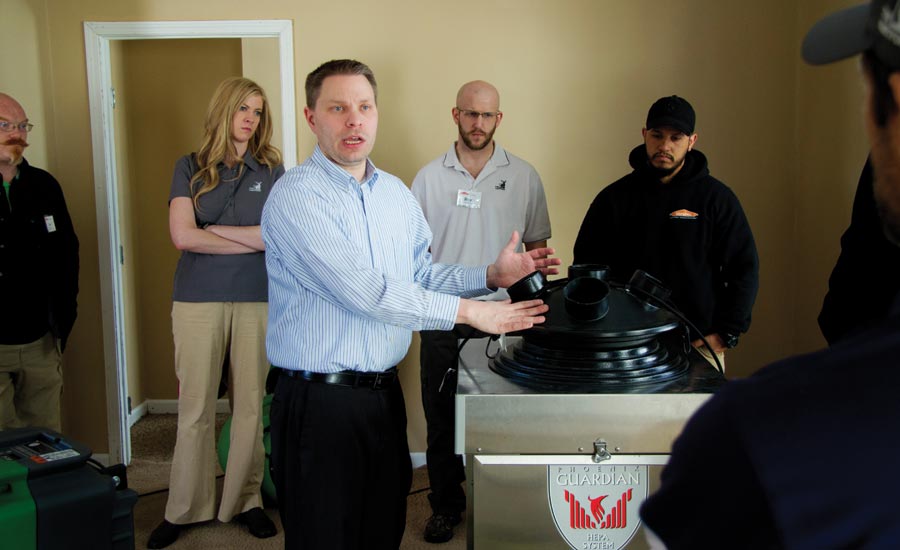
Photos courtesy of SERVPRO
Students get a lot of hands-on experience with a variety of drying tools and techniques throughout the process. That includes thermal cameras, moisture meters, extraction equipment and tools, dehumidifiers, air movers, cavity drying systems, hardwood mat systems, heating equipment, and pretty much any other tool needed to inspect or dry a water damaged structure. “It’s not just about equipment; it’s understanding the proper usage of the equipment and the situations where it’s appropriate – we’re really striving for solid decision making.”
Due to the climate in Tennessee, dry time for the house differs throughout the year. In the middle of winter, Bowles says it can dry quickly – in four to five days. But during the hot, humid summer, it could take six or seven.
“These dry times are most dependent on the drying progress of the hardwood flooring, tile floor assembly, and in-place drying of carpet, pad, and subfloor.” Bowles added, “It’s not just about drying a structure and its contents with a group of people; these classes are about making decisions, challenging those decisions, and learning together.”
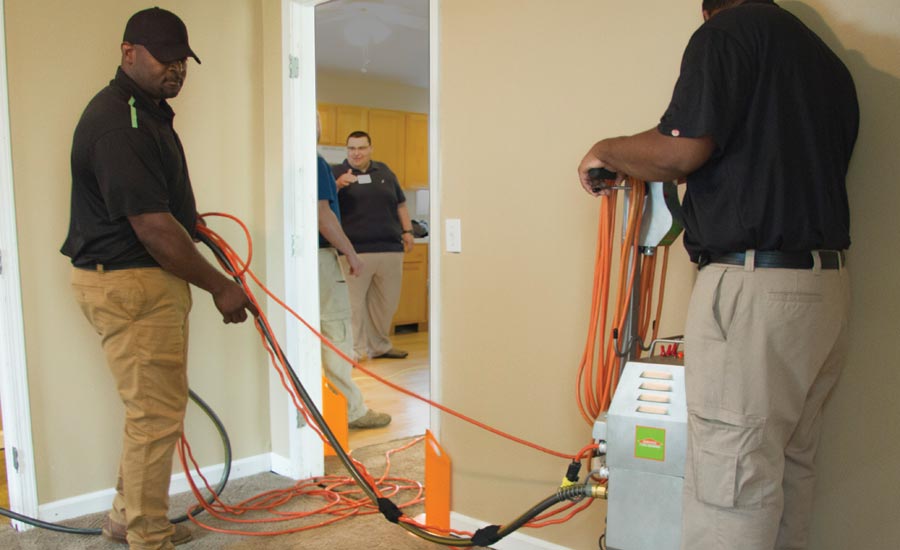
Photos courtesy of SERVPRO
THE INVESTMENT
Bowles really drove home the point that industry certifications carry a lot of weight. People are looking for WRT and ASD-type certifications as a kind of gauge of a restoration contractor’s knowledge. So, people who attend the classes and earn the credentials are able to further prove they know what they’re doing to insurance clients and customers alike. Plus, the certifications belong to the individual – not the company they work for – meaning a 19-year-old straight out of high school can really jump start a career in restoration with the right hands-on training opportunities from the start. When those technicians bring that hands-on knowledge back to their company, the training investment pays off tenfold.
“Yes, hands-on training seems like a hassle, but our biggest return on investment in training comes when people can see it and do it. The odds are much better it’s going to stick with them,” he said. “The only thing that will make it stick even more is when they teach the skills to others. Set them up to succeed from the start, then help them become trainers in their company.”

